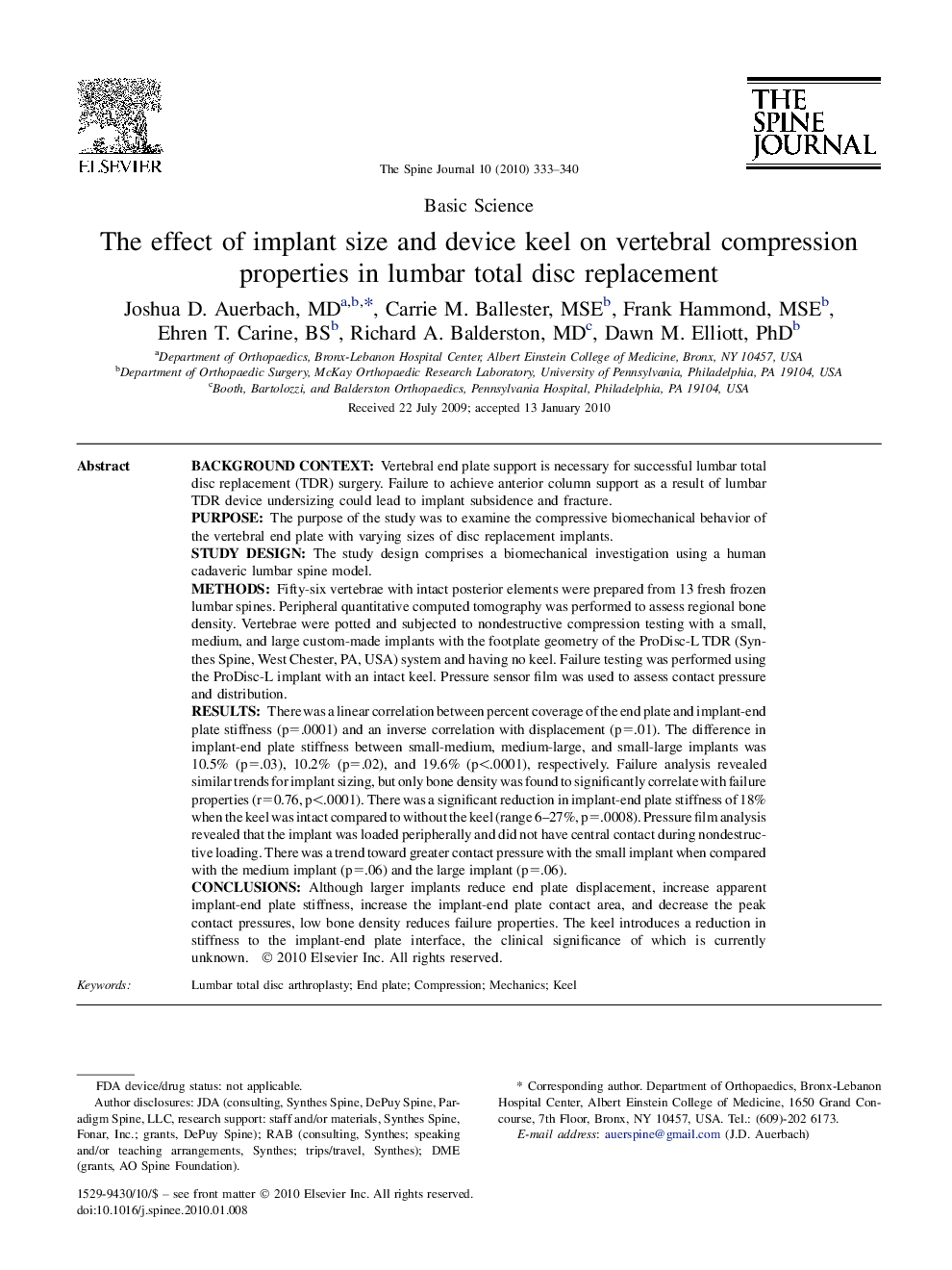| Article ID | Journal | Published Year | Pages | File Type |
|---|---|---|---|---|
| 4098581 | The Spine Journal | 2010 | 8 Pages |
Background ContextVertebral end plate support is necessary for successful lumbar total disc replacement (TDR) surgery. Failure to achieve anterior column support as a result of lumbar TDR device undersizing could lead to implant subsidence and fracture.PurposeThe purpose of the study was to examine the compressive biomechanical behavior of the vertebral end plate with varying sizes of disc replacement implants.Study DesignThe study design comprises a biomechanical investigation using a human cadaveric lumbar spine model.MethodsFifty-six vertebrae with intact posterior elements were prepared from 13 fresh frozen lumbar spines. Peripheral quantitative computed tomography was performed to assess regional bone density. Vertebrae were potted and subjected to nondestructive compression testing with a small, medium, and large custom-made implants with the footplate geometry of the ProDisc-L TDR (Synthes Spine, West Chester, PA, USA) system and having no keel. Failure testing was performed using the ProDisc-L implant with an intact keel. Pressure sensor film was used to assess contact pressure and distribution.ResultsThere was a linear correlation between percent coverage of the end plate and implant-end plate stiffness (p=.0001) and an inverse correlation with displacement (p=.01). The difference in implant-end plate stiffness between small-medium, medium-large, and small-large implants was 10.5% (p=.03), 10.2% (p=.02), and 19.6% (p<.0001), respectively. Failure analysis revealed similar trends for implant sizing, but only bone density was found to significantly correlate with failure properties (r=0.76, p<.0001). There was a significant reduction in implant-end plate stiffness of 18% when the keel was intact compared to without the keel (range 6–27%, p=.0008). Pressure film analysis revealed that the implant was loaded peripherally and did not have central contact during nondestructive loading. There was a trend toward greater contact pressure with the small implant when compared with the medium implant (p=.06) and the large implant (p=.06).ConclusionsAlthough larger implants reduce end plate displacement, increase apparent implant-end plate stiffness, increase the implant-end plate contact area, and decrease the peak contact pressures, low bone density reduces failure properties. The keel introduces a reduction in stiffness to the implant-end plate interface, the clinical significance of which is currently unknown.
